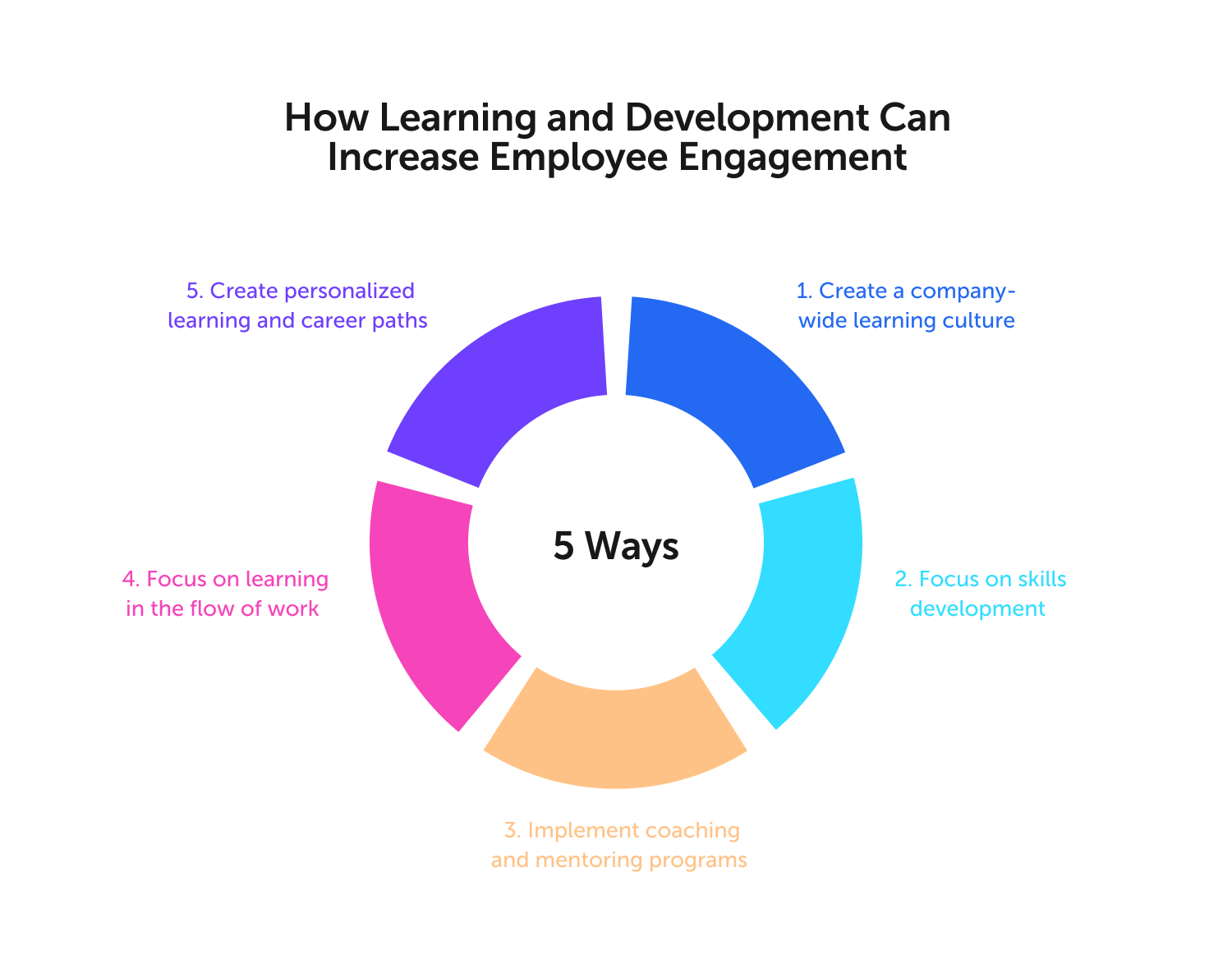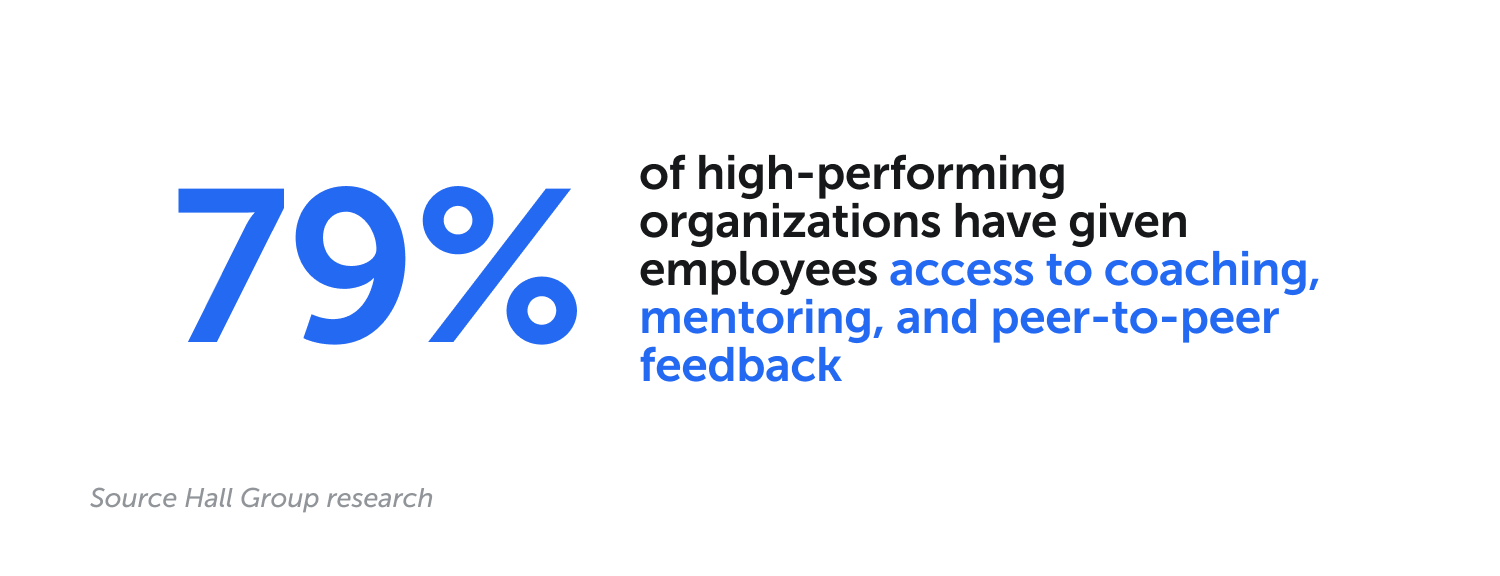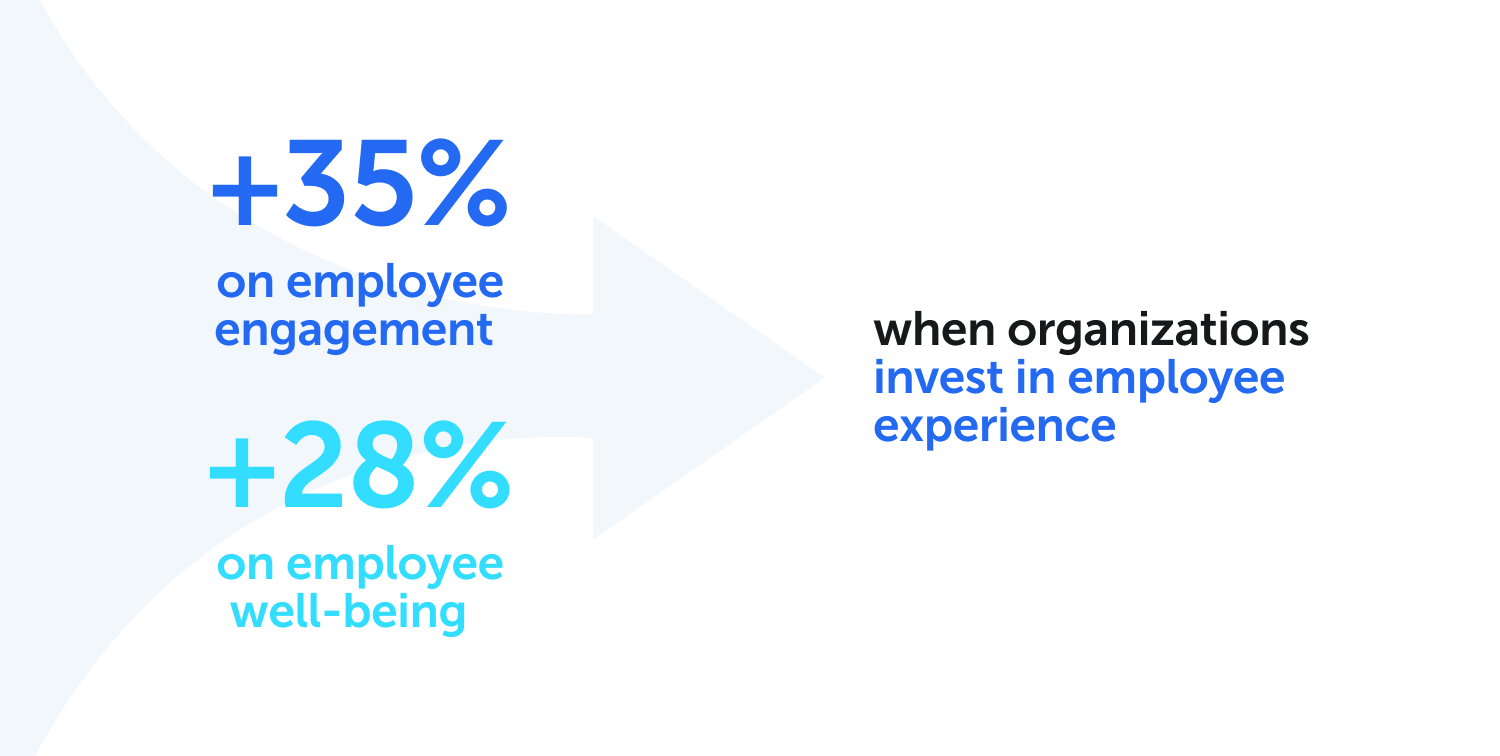How to improve employee engagement with L&D
Learn how to improve employee engagement in the workplace with practical ideas that boost motivation, connection, and performance.

It is a well-established fact that engaged employees consistently contribute to higher productivity, improved customer satisfaction, and better business outcomes compared to their disengaged counterparts.
Yet despite this, recent data from Gallup’s State of the Global Workplace report reveals a troubling reality: globally, only 20% of employees are actively engaged in their work and the workplace.

This means that 80% of the workforce is either not engaged or actively disengaged, highlighting a serious need for organizations to re-evaluate their employee engagement strategies.
In parallel, record-high turnover rates, employee attrition, and a rise in job hopping or career changes across industries underscore the urgency to boost employee motivation, job satisfaction, and organizational commitment.
Workers are not just quitting their jobs — many are leaving entire sectors in search of better culture, purpose, and work-life balance.

L&D strategy framework
You will receive a list of questions along with a spreadsheet template to help you analyse your L&D strategy.
DOWNLOAD FRAMEWORKHow to improve employee engagement with L&D: 5 ways

1. Create a company-wide learning culture
One of the most popular definitions of “learning culture” is attributed to CEB (now part of Gartner): “Learning culture is a culture that supports an open mindset, an independent quest for knowledge, and shared learning directed toward the mission and goals of the organization.”
Opportunities to learn and grow as part of everyday work increase employee engagement. The whole organization needs to be involved, individually and collectively.
Offering learners the choice in how, when, and what they learn builds a culture of self-directed, continuous learning and increases motivation which leads to a deeper knowledge and helps learners to do their work better.
Modern learning platforms are crucial to building a learning culture. They provide engaging learning experiences by giving access to media-rich content, which learners can easily find whenever they need it.

Build a learning culture: a practical workbook for your organization
Upgrade your organization’s learning culture with clear, actionable strategies to address the challenges.
Download workbook2. Focus on skills development
In a 2019 Global Human Capital Trends Survey, more than 50% of respondents said it was easier for employees to find jobs outside of their organizations than inside, but for organizations, hiring and onboarding new talent is time-consuming and expensive.
To ensure their workforce is competitive and they can keep their best talent, upskilling and reskilling should be strategic focus areas for organizations.
Upskilling involves improving existing skills by deepening and broadening the abilities within a specific area of expertise. Reskilling focuses on adopting new skills to cover a unique role in the organization.
In the long run, upskilling and reskilling improve employee engagement and help companies attract and keep top talent.
One of the organizations Deloitte interviewed has reached a nearly 30% increase in employee engagement by implementing a robust internal career program to help employees reskill themselves for new positions within the organization.
3. Implement coaching and mentoring programs
In today’s working environment, the pace of change is often overwhelming for employees.
Coaching and mentoring can help employee develop new skills to cope with constant pressure and change and keep them engaged in their work. A two-way learning opportunity keeps employees and managers engaged.
ATD (Association for Talent Development) points out that coaching and mentoring have similar goals and different roles.
Mentoring focuses on establishing connections and creating mutually beneficial, two-way relationships to build long-term career development. Coaching focuses on helping learners find solutions and create action plans by listening and identifying their needs.

Based on Brandon Hall Group research, organizations see better business results where coaching and mentoring are valued, encouraged, and practiced from the top leadership on down. 79% of high-performing organizations have given employees access to coaching, mentoring, and peer-to-peer feedback.
4. Focus on on-the-job training, microlearning, and learning in the flow of work
A modern learning experience is a critical part of the whole employee experience. Organizations that invest in employee experience are more likely to experience a net positive impact on employee engagement (+35%) and employee well-being (+28%).

In recent years learning platforms have evolved to enable “learning in the flow of work,” which delivers learning through existing tools when needed. Their ability to provide high-impact microlearning at the point of need makes learning accessible while working.
On-the-job training (OJT) is a practical approach to acquiring new competencies and skills needed for a job in a natural or close-to-real working environment. This brings cost savings over time, as employees are not taken away from their jobs to learn. Modern learning technologies enable experiential learning also from a distance.
Based on Brandon Hall Group’s research, 73% of high-performing organizations have allowed employees to experience potential roles through stretch assignments, job rotations, and team participation.
5. Create personalized learning paths, learning programs, and career paths
According to Brandon Hall Group research, personal and career growth are top drivers of employee engagement. Personalized learning programs are an excellent way to help employees shape their professional futures and create their career paths.
Personal and career growth are top drivers of employee engagement.
Even in the best-case scenario, training programs are often designed for general needs, so creating personalized learning paths is needed to provide a good learning experience.
Individual training needs and focus areas identified during mentoring and coaching sessions should be addressed by assigning learning sessions so all the activities complement each other. This way, learners receive the most appropriate support tailored to their needs.
Importance of Learning and Development (L&D) for employee engagement
One of the main reasons people leave their jobs is “lack of career opportunities”.
The research findings show that professional development is critical to employees: 86% of professionals would change jobs if offered more professional development opportunities, and 92% of employees think having access to professional development is important or very important.
In addition, according to LinkedIn’s Workplace Learning Report 2024, 8 out of 10 people say learning adds purpose to their work.
Recently, the role of L&D in increasing employee engagement is becoming even more critical. According to LinkedIn’s Workplace Learning Report, 2022, having opportunities to learn and grow is now the number 1 factor that people say defines an exceptional work environment.
Having opportunities to learn and grow is now the number 1 factor that people say defines an exceptional work environment.
Also, development is one of the key drivers of engagement for millennials. Based on the Deloitte Global 2022 Gen Z and Millenial Survey, learning and development opportunities were the top priorities when choosing an employer, and already in 2016, Gallup’s report revealed that millennials fundamentally think about jobs as opportunities to learn and grow.
Organizations focusing on these five areas are more likely to improve business performance, not just employee engagement. By combining modern learning technology with these activities, organizations can make learning scalable to build employee engagement and support their evolving business needs over time.
To learn more about ways to improve employee development, read this article.




